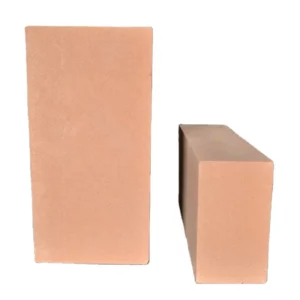Can you explain how lightweight insulating bricks help to reduce heat transfer in buildings?
Lightweight insulating bricks help reduce heat transfer in buildings through their insulation properties.
Here’s how they contribute to energy efficiency:
Thermal Resistance: Lightweight insulating bricks have low thermal conductivity, which means they are not efficient conductors of heat. This property helps to limit heat transfer through the bricks, reducing the amount of heat that enters or escapes the building. As a result, the indoor temperature remains more stable, reducing the need for excessive heating or cooling.
Reduced Heat Loss: Lightweight insulating bricks act as a barrier to heat loss. When used in exterior walls, roofs, or insulation systems, they help prevent heat from escaping the building during colder seasons. This reduces the reliance on heating systems and minimizes energy consumption and associated costs.
Minimized Heat Gain: In warmer climates, lightweight insulating bricks help limit heat gain from the external environment. By providing thermal resistance, they inhibit the transfer of external heat into the building. This reduces the reliance on cooling systems, leading to energy savings and improved comfort.
Insulating Air Spaces: Lightweight insulating bricks often have a porous structure or contain insulating materials such as expanded clay, perlite, or vermiculite. These materials create small air pockets within the bricks, which enhance their insulating properties. The trapped air acts as an additional layer of insulation, further reducing heat transfer.
Improved Building Envelope: By incorporating lightweight insulating bricks into the building envelope, such as walls and roofs, the overall thermal performance of the structure is enhanced. The reduced heat transfer through the walls and roof helps maintain a comfortable indoor environment while reducing the load on heating, ventilation, and air conditioning (HVAC) systems.
Energy Efficiency and Cost Savings: The use of lightweight insulating bricks in buildings can lead to significant energy savings. light weight insulating bricks By reducing the reliance on heating and cooling systems, building owners can lower their energy consumption and associated costs. The improved energy efficiency can also contribute to meeting energy efficiency regulations and certifications.
It’s important to note that the specific energy-saving benefits of lightweight insulating bricks may vary depending on factors such as the building’s design, climate conditions, and overall insulation strategy. Proper installation, along with complementary insulation measures, is crucial to maximizing the energy efficiency benefits of lightweight insulating bricks in buildings.
What is light weight insulating bricks?
Lightweight insulating bricks, also known as lightweight thermal insulation bricks or lightweight refractory bricks, are a type of building material with excellent insulating properties. These bricks are specifically designed to provide thermal insulation in various applications, such as in the construction of walls, roofs, furnaces, kilns, and other high-temperature environments.
The distinctive feature of lightweight insulating bricks is their low density, achieved through the use of lightweight aggregates or foaming agents during the manufacturing process. This reduced density allows the bricks to have high porosity, resulting in improved thermal insulation performance.
The composition of lightweight insulating bricks can vary, but they commonly consist of materials such as expanded clay, vermiculite, perlite, or other lightweight aggregates. These aggregates are mixed with bonding agents and additives, and then subjected to high-temperature firing or other curing methods to form the final brick shape.
Due to their low thermal conductivity, lightweight insulating bricks effectively minimize heat transfer through conduction. This property helps to keep the heat inside a structure during cold weather or prevents excessive heat from entering during hot weather, thus reducing energy consumption for heating or cooling purposes.
Lightweight insulating bricks offer several advantages, including reduced weight, improved energy efficiency, enhanced fire resistance, and ease of installation. They are commonly used in residential, commercial, and industrial applications where thermal insulation is crucial for energy conservation, temperature control, and overall comfort.
It’s important to note that specific properties, dimensions, and applications of lightweight insulating bricks may vary depending on the manufacturer and specific product specifications.
